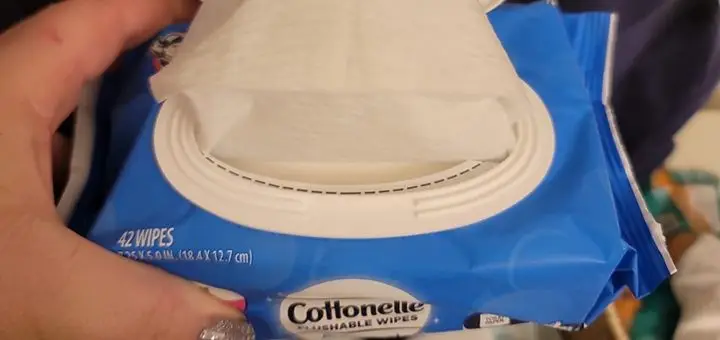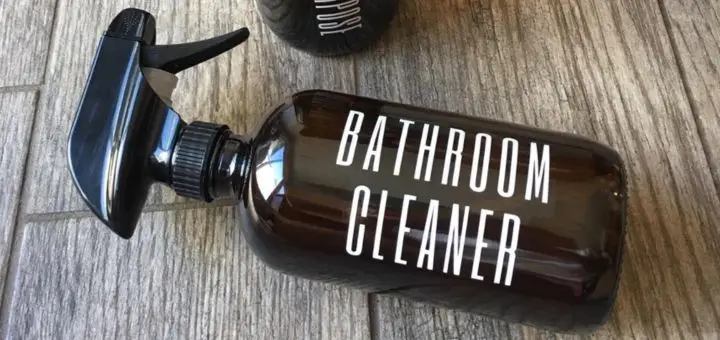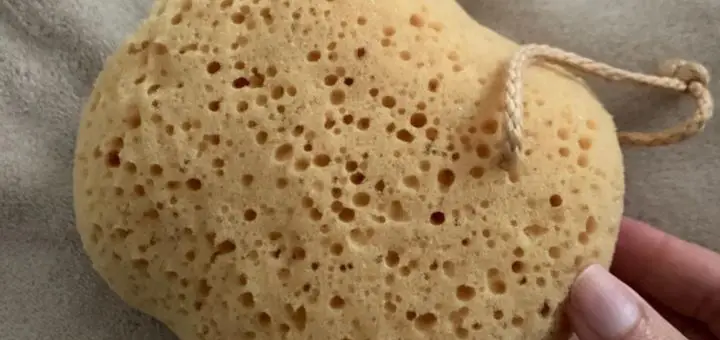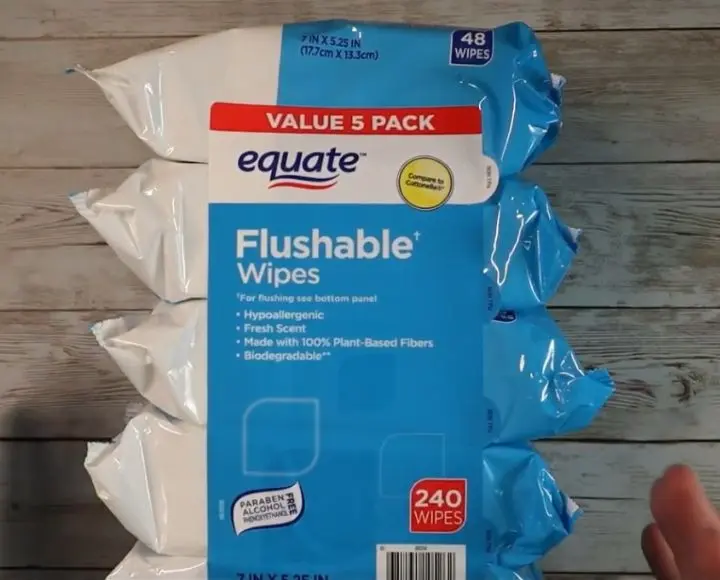A bidet is a great thing to have at home, but not everyone can afford one, or even fit one in their bathrooms. Actually, there are many different types of bidets, each with its pros and cons, you don’t have to get a standalone porcelain bidet you might see in some parts of the world.
If you don’t have a bidet at home but still would like to have the added luxury and a clean bum, there are some bidet alternatives that you should consider. In some situations, instead of using a bidet, you can use a handheld sprayer, wet wipes, spray bottles, sponges, or even the shower if your toilet is situated close enough for you to reach.
Buying a bidet doesn’t have to be complicated or even expensive, there are cheap alternatives such as handheld sprayers and non-electric bidet toilet attachments. But if you don’t want to invest in a bidet, keep reading to find out how you can use the above-mentioned products as bidet alternatives.
Best Alternatives to Bidets
In today’s eco-conscious world, the bidet stands out as an environmentally friendly and hygienic option for post-toilet cleansing. However, not everyone has the luxury of space or budget to install a traditional bidet in their bathroom.
If you’re one of those individuals looking for a bidet alternative, you’re in luck. From handheld sprayers to simple spray bottles, there are numerous options available that offer the benefits of a bidet without the need for a significant investment or installation hassle.
Whether you’re at home or on the go, using public restrooms, these alternatives ensure you don’t have to compromise on cleanliness. Here’s a comprehensive list of the best bidet alternatives:
Handheld Sprayer
There are numerous reasons why someone might gravitate toward a handheld sprayer as an alternative to a bidet. For starters, handheld sprayers offer a level of flexibility and control that’s hard to match. They are designed to provide a direct stream of water, ensuring a thorough cleanse of water after using the toilet.

Handheld sprayers are incredibly user-friendly. Their installation process is straightforward, often requiring just a few minutes to hook up to the existing water supply in your bathroom. This ease of setup is often overlooked for anything but its primary purpose, but it’s a significant advantage.
In terms of performance, they rival the cleaning efficiency of a bidet, though with a caveat. The risk of spraying water inadvertently and causing a wet mess is a potential downside. Budget-conscious individuals will appreciate that the handheld sprayer is usually more cost-effective than a bidet toilet attachment, making it a good option for those who want to save money without compromising on hygiene.
The market is flooded with a variety of handheld bidet sprayers, catering to diverse preferences. Some models boast long hoses, ensuring you can reach all areas of your body with ease. In contrast, others come with shorter hoses, which might be easier to maneuver and handle, especially for those who don’t want to deal with the hassle of a lengthy hose.
Pros of a Handheld Sprayer
- Ease of Installation and Use: One of the standout features of a handheld sprayer is its simplicity. You don’t need to be a DIY expert to set it up. Once installed, it’s easy to use; just aim and spray.
- Budget-Friendly: For those who are conscious about their spending but don’t want to compromise on cleanliness, the handheld sprayer is a budget-friendly alternative to more expensive bidet systems.
Cons of a Handheld Sprayer
- Potential for Mess: While they offer precise control, there’s always the risk of water spraying in unintended directions if not used properly. It’s crucial to familiarize oneself with the device and read the instructions carefully before use.
- Maintenance Required: After each use, it’s essential to clean the sprayer to prevent bacterial buildup. Neglecting this step can lead to bacteria accumulation, posing a significant health risk over time. This is especially true if the sprayer is used by multiple members of a household.
Wet Wipes
Wet wipes offer a quick and convenient way to freshen up, especially when you’re on-the-go or don’t have access to water. However, while they might seem like a good option, especially for those who travel frequently or want something portable, they come with their own set of challenges.

Unlike the stream of water from a bidet or handheld sprayer, wet wipes don’t provide the same level of cleanliness. Moreover, their environmental impact is often overlooked for anything but feminine hygiene, as they are not biodegradable and can lead to clogs if flushed down the toilet. This necessitates having a dedicated bin in the bathroom for their disposal, which, if not emptied regularly, can become a breeding ground for bacteria.
If you’re leaning towards using wet wipes as a bidet alternative, it’s essential to be informed about their pros and cons. While they might seem like a cost-effective solution initially, especially when compared to the high-end bidets, the cumulative cost can add up over time.
Pros of Using Wet Wipes
- Portability: Wet wipes are compact and lightweight, making them perfect for travel or on-the-go situations.
- Ease of Use: They are user-friendly, requiring no setup or installation.
- Affordability: Initially, wet wipes are less expensive than many bidets on the market, making them a budget-friendly option for people not ready to invest in a bidet.
Cons of Wet Wipes
- Environmental Concerns: Wet wipes are not eco-friendly and contribute to landfill waste. They also pose a risk to septic tanks and sewage systems if flushed.
- Incomplete Cleanliness: They may not provide as thorough a cleaning as water, leaving residue or not addressing certain hygiene needs.
- Long-term Costs: While they might seem inexpensive at first, the recurring cost of purchasing wet wipes can surpass the one-time investment in a bidet or bidet attachment over time.
- Health Concerns: Wet wipes might not be suitable for individuals with conditions like hemorrhoids or incontinence, as they can irritate sensitive areas.
Spray Bottles
Spray bottles are common household items that many of us have on hand for various purposes, from cleaning to gardening. If you don’t have one lying around, they’re readily available at most stores and won’t set you back more than a dollar or two.

As an alternative to a bidet, using a spray bottle can be surprisingly effective. Think of it as a portable bidet bottle top that you can fill up with water from the sink and use to cleanse your private areas. It’s a simple solution that offers the convenience of a bidet without the need for any installation or significant investment.
However, while spray bottles are undeniably budget-friendly and can provide a refreshing stream of water, they come with their own set of challenges. The design of a typical spray bottle may not be ergonomically suited for this purpose, making it a bit tricky to aim and spray effectively. Moreover, the importance of hygiene cannot be overstated.
After each use, it’s essential to ensure that the bottle is thoroughly cleaned and disinfected to prevent any bacterial buildup. This means that while it’s a cost-effective option, it does require a bit more attention to cleanliness and maintenance.
On the bright side, for those who are environmentally conscious, using a spray bottle is an eco-friendly choice. Unlike wet wipes, which can clog septic tanks and are not always biodegradable, spray bottles only use water, making them a more sustainable option. Plus, they’re compact and lightweight, making them a good option for on-the-go situations or travel.
Pros of Spray Bottles as Bidet Alternative
- Budget-friendly: It’s an inexpensive and budget-friendly alternative to traditional bidets.
- Effective: Provides a direct stream of water for effective cleaning.
- Eco-friendly: Only uses water and reduces the reliance on toilet paper or wet wipes.
- Portable: Suitable for travel or on-the-go use.
Cons of Spray Bottles
- Bulky: Can be awkward to use, especially in reaching all areas effectively.
- Needs cleaning: Requires thorough disinfection after each use to prevent bacterial buildup.
- Low pressure: The pressure might not be as consistent or strong as other bidet alternatives.
- Low durability: Might not be as durable as other options, especially if used frequently.
Sponges
The humble sponge, often used for cleaning dishes or wiping down surfaces, can also serve as a makeshift tool for personal hygiene. When you’re in a pinch or simply want to cleanse with water but don’t want to rely on toilet paper, a sponge can come in handy.

This method can be particularly appealing for those looking to save money and reduce their environmental footprint, as it offers a reusable alternative to disposable products. However, it’s crucial to prioritize hygiene when employing this method.
After each use, the sponge should be cleaned meticulously with soap and water, ensuring that no residue remains. Additionally, it’s advisable to store the sponge in a dry, sanitary location, away from the reach of pets and small children, to prevent any potential contamination.
Pros of Using Sponges
- Cost-Effective: A sponge is a cheap alternative to a bidet. Most stores offer sponges at a fraction of the cost of other hygiene products, making it a budget-friendly option.
- Eco-Friendly: Unlike disposable wet wipes or toilet paper, sponges can be reused multiple times, reducing waste and promoting environmentally conscious choices.
- Easy to Use: With its soft texture and flexible form, a sponge can easily reach most areas, ensuring a thorough cleanse.
- Portable: Due to their small size, sponges are easy to carry on the go, making them a good option for travel or situations where other alternatives might not be available.
Cons of Sponges
- Less Effective: While sponges can provide a decent cleanse, they may not be as effective as a bidet or a handheld sprayer in delivering a thorough wash.
- Potential for Skin Irritation: Sponges can be abrasive, especially if not used gently. This can lead to rashes, skin burns, or other irritations, especially for those with sensitive skin or existing skin problems.
- Hygiene Concerns: If not cleaned and stored properly, sponges can harbor bacteria and germs, posing a risk to health.
- Durability: Unlike durable options like a Gospa or a handheld sprayer, sponges wear out over time and will need to be replaced periodically.
Shower Head
For those who don’t have the luxury of a bidet in their bathroom but still want to cleanse with water, the shower can be a practical alternative. If your toilet is situated close enough to the shower, and you have a handheld showerhead, you’re in luck.

This setup allows you to use the shower head much like a handheld sprayer for a bidet. It’s essential to ensure the water temperature is just right; too hot, you risk discomfort or even burns. Once you’ve gently rinsed your bottom, it’s crucial to dry off properly, either with a clean towel or toilet paper, to prevent any residue or buildup.
Using the shower as a makeshift bidet might seem unconventional at first, but with time, it can become a routine part of your hygiene regimen. It’s a cost-effective method, eliminating the need for expensive bidet attachments or specialized toilets.
This method offers the flexibility of adjusting both the water pressure and temperature, ensuring a comfortable and refreshing experience each time.
Pros of Using the Shower as a Bidet
- Budget-Friendly: There are no additional expenses involved. If you already have a shower with a handheld showerhead, you’re good to go.
- Versatility: The handheld showerhead is easy to maneuver, allowing you to reach both front and rear areas with ease.
- Customizable Experience: You have the freedom to adjust both the water pressure and temperature to your liking, ensuring a comfortable cleanse every time.
Cons of Using the Shower
- Potential for Mess: Using the shower head in this manner can be messy. It’s essential to be careful and avoid spraying water all over the bathroom.
- Hygiene Concerns: After each use, it’s crucial to disinfect the shower head properly. Bacteria can easily accumulate, and regular cleaning ensures that you maintain a hygienic environment.
- Not Always Convenient: If you’re in a hurry or have guests over, using the shower as a bidet might not always be the most practical option. It requires a bit more time and effort compared to traditional bidets or wet wipes.
Why You Should Consider a Bidet Toilet Attachment
When it comes to bathroom upgrades, the bidet toilet attachment stands out as a blend of convenience and cost-effectiveness. These attachments, designed as alternatives to traditional bidets, offer a plethora of benefits without breaking the bank.
Not only are they more affordable, but they also provide an easy installation process, eliminating the need for professional intervention. This makes them an ideal choice for individuals seeking a hassle-free enhancement to their current toilet setup.
The user experience with bidet attachments is unparalleled. Most come equipped with intuitive control panels, ensuring a comfortable and customizable cleanse every time. Moreover, some models go the extra mile, boasting features like built-in warm air dryers and night lights.
As the world grapples with the rising costs of toilet paper and the environmental concerns of wet wipes, bidet attachments emerge as a sustainable and economical solution. By investing in one, you’re not just opting for luxury; you’re making a smart choice for your wallet and the environment.
Affordability and Easy Installation
Bidet toilet attachments are a testament to the fact that you don’t need to spend a fortune to experience luxury. Compared to traditional stand-alone bidets, these attachments are significantly more budget-friendly. But the savings don’t stop at the initial purchase.
Over time, the reduced reliance on toilet paper and wet wipes can lead to substantial financial savings. Not only that, but the installation process is a breeze. Most bidet attachments can be set up in mere minutes, eliminating the need for costly professional services. This DIY approach ensures that you can enjoy the benefits of a bidet without any added installation hassles.
Enhanced User Experience
The user-centric design of bidet toilet attachments guarantees an exceptional experience. The control panels on most models are straightforward, allowing users to adjust water pressure and temperature with ease. This ensures that every visit to the bathroom is tailored to individual preferences. For those who appreciate added features, certain models don’t disappoint.
The inclusion of warm air dryers provides a gentle drying experience post-cleanse, while night lights ensure visibility during nighttime visits. These thoughtful additions elevate the overall bathroom experience, making bidet attachments a must-have for modern homes.
Environmental and Economic Benefits
In today’s eco-conscious world, the environmental impact of our choices is more significant than ever. Bidet attachments offer a sustainable alternative to the continuous purchase and disposal of toilet paper and wet wipes. By reducing the reliance on these products, households can significantly decrease their environmental footprint.
Economically, the savings are evident. With the rising costs of bathroom essentials, a one-time investment in a bidet attachment can lead to long-term financial benefits. Not only do you save on recurring expenses, but you also contribute to a greener and more sustainable future.
How Hygienic Are Bidets?
Bidets have long been celebrated as a superior hygienic solution for post-toilet cleansing. Offering a refreshing stream of water, they provide a thorough clean that’s often overlooked for anything but feminine hygiene in certain parts of the world.
For those unfamiliar with the concept, the initial encounter with a bidet might be met with hesitation or curiosity. However, once you’ve experienced the clean and invigorating sensation of a bidet, it’s easy to understand why many consider it a game-changer in personal hygiene, often even ranking it among their favorite bathroom amenities.
While there’s no denying the convenience of toilet paper, especially when on the go, it doesn’t quite measure up to the bidet in terms of cleanliness. Toilet paper, regardless of its quality, primarily wipes away waste, potentially leaving residue.
Bidets, with their water jets or sprayers, ensure a more thorough cleanse, washing away any unwanted germs, debris, or residue from your body. This water-based cleaning method can be especially beneficial for those with mobility issues or during periods and pregnancy, where gentle yet effective cleaning is crucial.
Beyond personal hygiene, bidets also boast significant environmental benefits. The production of toilet paper, especially the bleached varieties, involves chemical solutions that can be harmful to the environment. Moreover, the excessive use of toilet paper contributes to deforestation and clogs up landfills, leading to environmental degradation.
Final Words
If you’re looking for a bidet alternative, there are several options to choose from. Depending on your needs and budget, you may want to consider a handheld sprayer, wet wipes, or even a regular spray bottle if you are really on a budget.
Handheld bidet sprayers are a great option for those who want the convenience of being able to use a bidet without having to install one. They’re also relatively inexpensive and easy to use. Toilet seat bidets are another popular option and can be easily installed on most toilets. However, they can be more expensive than handheld sprayers.
Other low-cost alternatives include wet wipes, spray bottles, sponges, or even your own shower. Whatever option you choose, make sure to do your research to find the best possible price and product for your needs.
